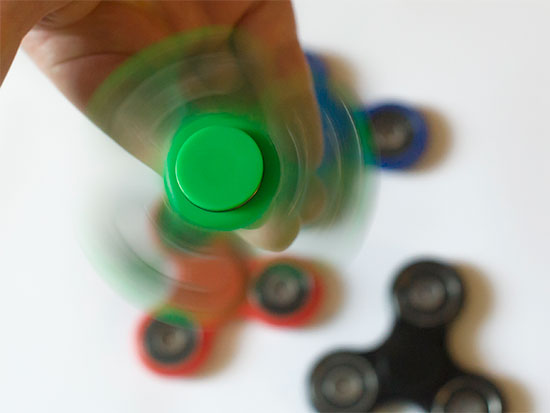Written by: Tiffany Westry
Need more info? Contact us
 Fidget spinners are a type of fidget toy. Fidgets have been used for years by teachers, behavioral therapists, and parents to help people with behavioral and attention disorders. They are flying off store shelves and showing up in classrooms around the country. The growing popularity of fidget spinners, originally designed to help children and adults with autism and attention disorders like ADHD, is causing teachers and school officials to have to decide whether they should be allowed in classrooms.
Fidget spinners are a type of fidget toy. Fidgets have been used for years by teachers, behavioral therapists, and parents to help people with behavioral and attention disorders. They are flying off store shelves and showing up in classrooms around the country. The growing popularity of fidget spinners, originally designed to help children and adults with autism and attention disorders like ADHD, is causing teachers and school officials to have to decide whether they should be allowed in classrooms.
Fidget toys are not new. These handheld objects come in all shapes and sizes, from stress balls to putty and bracelets. For years, fidgets have been used as tools by teachers, therapists and parents to keep restless fingers busy, bodies relaxed and minds focused. However, fidget spinners have seen a surge in mainstream popularity and now come with flashing lights and in every color and finish imaginable.
“Research shows that, if you have ADHD or trouble focusing, sometimes a minor activity can help occupy your brain,” said Robin Parks Ennis, Ph.D., assistant professor in the UAB School of Education.
“For students, it gives them something to channel their energy. It can increase their executive functioning and their working memory when they are doing challenging tasks. Fidget toys definitely have some merit, but it is important to make sure they are being used appropriately in the classroom.”
Ennis teaches education majors in the Department of Curriculum and Instruction about the best methods and strategies for working with learners with exceptionalities. Much of her research focuses on behavioral and instructional strategies for children with emotional and behavioral disorders. She has seen benefits of fidgets firsthand during her time as a high school teacher. She made them available to students during testing time, but did not allow students to keep the fidgets at their desks at all times.
| "We should be teaching students how to know what times are difficult for them so that they can use them at those target times.” |
“As students with attention issues need help focusing, a fidget toy can be a good thing for fidgeting,” Ennis said, “but it can also become a distraction, so it is necessary to find some balance.”
Ennis says there are three things teachers and parents can do to help students utilize fidget spinners as tools instead of toys in the classroom.
Help students identify when it becomes hard for them to focus.
“I would encourage teachers to teach students how to use them,” Ennis said. “Ask them to identify a time during the day that is most challenging for them, whether it is during independent seat work or a writing test. Also, encourage students to understand that, just because their neighbor is using a fidget toy during math, it doesn’t mean they have to take theirs out.”
Establish targeted times.
Once students have identified their most challenging time of the school day, encourage them to use their fidget spinners during those targeted times only.
“In most of the studies that have investigated the use of fidgets, researchers had students use them for a targeted amount of time,” Ennis said. “They were allowed for 30 minutes during a math lesson or maybe while they are writing an essay. If it is always out and always in their hand, it can shift from tool to toy. We should be teaching students how to know what times are difficult for them so that they can use them at those target times.”
Remember that what works for some does not work for all.
“Fads and trends come through the education system just like any other,” Ennis said. “It’s important to not think these things can be a cure-all for students who might have attention issues. There is some research that suggests these can be a great benefit, but educators and parents need to make sure they aren’t expecting this to be the only thing students need. They also need good classroom management strategies in place to support behaviors and keep them focused on the lesson.”